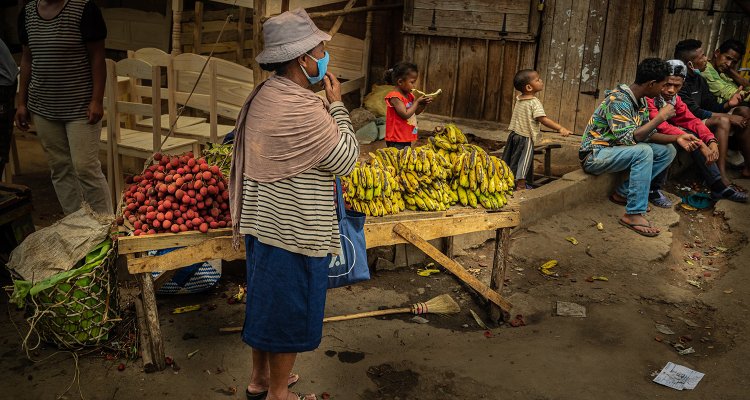
News
Global One Health approach connects food systems and health
“A Global One Health approach is a necessary tool to enable preparedness for future pandemics or minimize the effects of them”, states Bieneke Bron. She is one of the authors of ‘The Age of Pandemics, Connecting Food Systems and Health: A Global One Health Approach’. The publication by Bron, Joukje Siebenga and Louise Fresco is part of the book ‘Science and Innovations for Food Systems Transformations’, based on the UN Food System summit held in 2021.
Connection
One Health captures the health of people, animals, plants and the environment in one both as an approach and as an outcome, emphasizes Bieneke Bron, researcher at Wageningen Bioveterinary Research, part of Wageningen University & Research (WUR). “Disease outbreaks cause disruptions which may affect food security and, in many cases, workers’ income or the economic viability of businesses in the food system”, states Louise Fresco, former president of the board of WUR).
Together, Fresco, Bron and Joukje Siebenga, program leader of ERRAZE@WUR (Early Recognition and Rapid Action in Zoonotic Emergencies), authors of ‘The Age of Pandemics, Connecting Food Systems and Health’, address the link between global food security and One Health. According to the authors there are direct and indirect interactions of pandemics on food systems and health. The poor are more vulnerable to disease and economic downturns as a result of these interactions.
Reduce impact
The authors identify three ways to reduce the impact of diseases thus minimizing the risks of future pandemics:
- Reducing the need for natural habitat disruption
- Smart management of both sides of the interface between natural ecosystems and the agri-food system, and vigilance at the human-animal interface within the agri-food system
- Improving overall human, animal and environmental health
Local, regional and global food security are affected by the occurrence of epidemics of zoonotic infectious diseases, caused by pathogens that spill over from animals to humans. Simultaneously, non-zoonotic diseases that affect animals and plants also continue to disrupt food security. “A One Health approach embraces the notion that the health of animals, people, plants and the environment are inextricably connected”, emphasizes Bron. “Therefore, innovations that address issues such as climate change and other major One Health challenges, should also evaluate the risk for new and (re-)emerging human, animal and plant pathogens and their overall impact on One Health as an outcome.”
Prepare
The FAO stated that the COVID-19 pandemic revealed the interwovenness of our food systems and health. “The current pandemic was not the first, nor will it be the last”, state the experts from WUR. “For this reason it is important that we are aware that global food security and healthy people, animals, plants and environments are linked. By understanding that relationship, we will be able to better prepare ourselves for future pandemics or minimize the effects of them,” says Siebenga.
One Health approach
According to the WUR-experts both public and private parties should strengthen their One Health approach to jointly realize resilient and strong global agri-food systems and health.
“Food security is essential to human health and wellbeing, and a healthy human population is less susceptible to pathogens. Further research and an improved understanding of the role of food systems in the context of Global One Health may provide additional entry points via the food system for sustainable, culturally acceptable and economically feasible interventions”, says Fresco.
Operationalizing Global One Health Management of the interdependencies between health and food systems to improve health for all presents many challenges, including the need for a change in mindset, conclude the authors. The 2021 UN Food Systems Summit was an example of an initiative using an interconnected approach to set the stage for global food system transformation to achieve the Sustainable Development Goals by 2030. “When consumers, producers and governments combine their efforts and take a Global One Health approach to re-designing the agri-food system, significant steps can be made towards food system resilience and better health”, conclude Bron, Siebenga and Fresco.